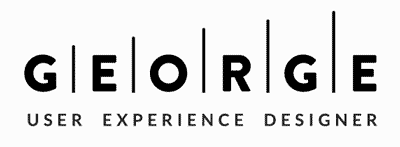Redesigning Procurated's Review Form
During my second year at Procurated, I undertook a comprehensive visual refresh of the review flow. My goal was to optimize sign-up conversions, increase review length, and reduce bounce rate.
My Role:
I led the design of the search experience. I collaborated with Bryan Postelnek the Sr Product Manager at Procurated.
Date Launched:
April 2022
Addressing Limitations and Enhancing User Experience of the existing review form
The review form is Procurated’s very heart. Every other feature on the platform depends on a public sector user to write a review. This form serves as a gateway for users to share their feedback. While the existing review form was usable, it was limiting to users. It was dull, did not convert well, and did not result in thoughtful, well-written reviews.
Project Goals
The high level goal were to declutter the UI, improve the overall UX and add an NPS rating (a prerequisite of some state governments - like Massachusetts), with the hope that it will result in a better converting review form.
Removing Distractions
The existing review form felt long and tedious, it also required the user to write a Review Headline and required sub-category ratings like Customer Service and Quality. We noticed that a lot of users seemed to complete only 50% of the review only to abandon it. Part of this seemed to be the result of having a lot of required fields and having to remember the supplier name, which then led to a cognitive overload ending in review writing abandonment.
Enhancing User Experience and Streamlining Data Entry. Our next steps:
Remove all review writing prompts beside the form fields and add info tooltips instead
It was evident from the reviews that users were not using the prompts.
Assist users in filling out the Supplier business name field with auto-complete, using our growing database
Previously, we had someone manually matching supplier names through the admin panel. Having an auto-complete helped users select the right supplier name.
Move sub-category ratings to the second page to reduce cognitive overload
We hoped that progressive disclosure would reduce form abandonment and also make the review process more streamlined for mobile users.
Add a Progress bar as they complete a required field
This was a quick way to give users feedback and to perhaps motivate them to move on to the next form field.
Provide a descriptor for each star rating. For example, a 5-star rating is “excellent” while a 3-star rating is “average”
* We noticed that the majority of our reviews were 5-star reviews. Without distinctions in ratings, the reviews became meaningless. Surely not every supplier was a 5-star supplier. Yelp, Google and other review platforms were not facing this issue, so we believed we could solve the problem. We decided that a descriptor attached to each star rating could help a user pause and question the supplier’s service or product. Is this supplier truly an “excellent” supplier?
Change “Next Step” CTA to “Submit Review”
Moving the sub-category ratings and NPS scores to the second page allowed the user to focus on writing the review. Once the user clicked “Submit Review” the review was considered finished on our back-end. However, the user was then presented with a second page thanking them and asking if they would be willing to provide a few more data points.
This scenario did cause one main issue. Once the user had clicked “Submit Review” to confirm their submission, they still had a few more things to do. Would it be justified to add another submit button? I recommended having a short message that confirmed their selection was captured. The message would refresh and mention which data point was captured every time the user made a selection.
I thought this was an opportune time to surface a “Write Another Review” prompt, as long as the user was in a review writing mood. We delayed the appearance of this prompt to bring a little more attention to it.
The Result, a less weighty and more inviting review writing process
Overall, these enhancements aimed to declutter the UI, improve the UX, and increase the conversion rate of the review form on Procurated. By implementing these changes, the platform sought to provide a more user-friendly and engaging experience, resulting in well-written and thoughtful reviews.





